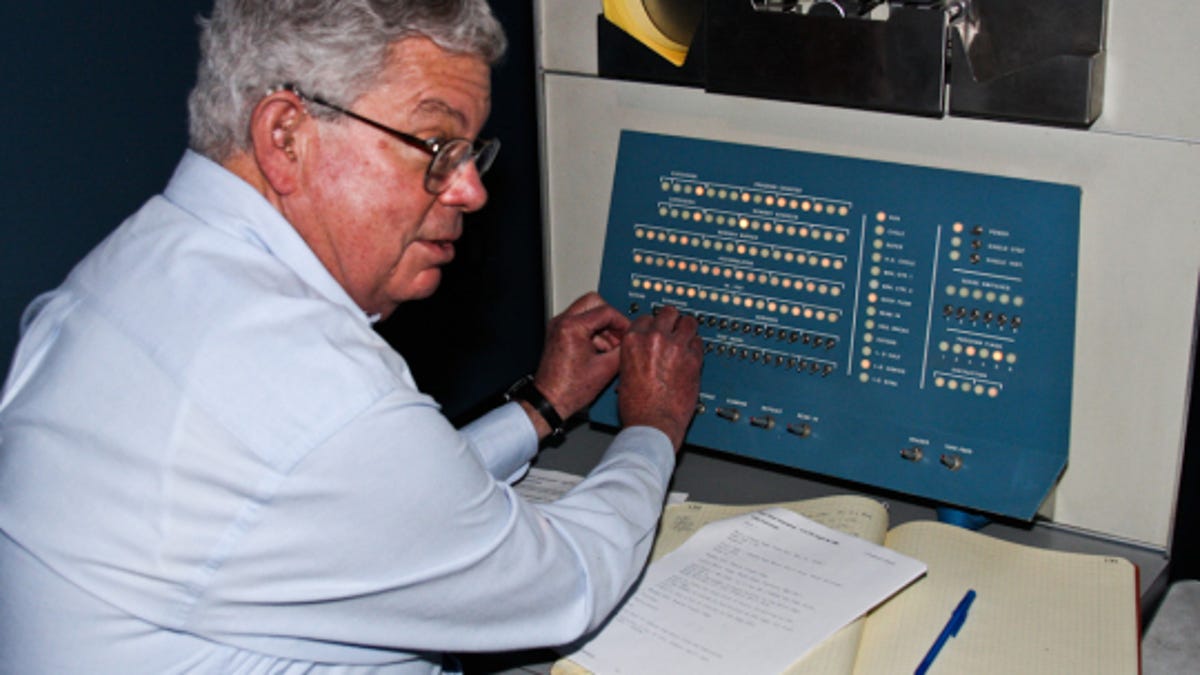A revolution at the Computer History Museum
Prior to opening a new exhibit on the emergence of the PC, the Silicon Valley museum gives journalists a preview that included meeting pioneers of the computing revolution.

A new exhibit that was two years and $19 million in the making opened at the Computer History Museum today, and if you have even a passing interest in technology (That's everyone, right?) you need to head to Silicon Valley and check it out.
Revolution: The First 2,000 Years of Computing is the name of the exhibit that contains thousands of products that track our obsession with creating machines to expand or augment human intelligence and capabilities. The abacus? Check. An original Apple I computer? Check. A working PDP-1 that you can actually play the first video game, Spacewar!, on? Hell yeah.
The exhibit is laid out roughly in chronological order with products grouped in 19 themes, such as computer languages, gaming, mainframes, and storage. There are also several videos that help explain complex concepts--such as how an abacus works--that people of the Angry Birds generation likely have no familiarity with. And there's some advertising in the personal computing area that is particularly fascinating. For example, one display shows an early Apple TV ad alongside an early IBM PC ad--and they are remarkably similar in style and focus to what you see today (education and family vs. corporate productivity).
In December, the museum invited a few tech journalists to a sneak peek and you can see my coverage here. (Don't miss the Steve Wozniak videos.) Two days ago, the museum hosted another preview event with Wozniak and a handful of other tech pioneers. It was yet another strong reminder that we live in an era in which we enjoy the benefits of the computing revolution, and the pioneers who made it all happen are still here to share their stories and insight.
Besides Wozniak, the other computing celebs in attendance were Fran Allen, a programming language expert who is celebrated for advancing computer science in the 1960s; Al Acorn, creator of Pong and co-founder of Atari; Max Mathews, programmer of the first-ever computer-generated sounds in the 1950s; and Don Knuth, a legendary computer scientist and author of a book series on computing algorithms called "The Art of Computer Programming."
How Spacewar! came to be
For me, the highlight of the day was talking at length with Steve Russell, a programmer and computer scientist who created Spacewar!, widely credited with being the first video game. We talked while playing a two-player game of Spacewar! that is actually running on a functional PDP-1 at the museum, and Russell explained the genesis of the game.
Digital Equipment Corp. was looking for a small program that could give a visual indication of the power of its $120,000 PDP-1. The Russians had put a man into space in January 1961 and the United States followed a few months later. Interest in space was at a fever pitch among the public and the government, so Russell and a partner went with a space theme.
In 1962, Spacewar! was completed, thanks to help from members of the Tech Model Railroad Club at MIT, and the program was freely distributed and ported to other systems. "You couldn't patent programs," Russell explained.
Too bad, because variants of Spacewar! were later created and commercialized, including Computer Space in 1971, considered the first coin-op video arcade game. (Yes, there is one at the museum.) If you've played Asteroids, the smash arcade hit from 1979, you know the basics of Spacewar! game play, with an exception. In both games you use buttons to thrust, turn right, turn left, shoot missiles, and hyperspace. (Your ship disappears for a moment and reappears in a random location.) In Asteroids, you shoot rocks but in Spacewar! you play against an opponent and the goal is to shoot their ship.
Both games use small dots of light to give the feel of being played against a starry background. But these are no random stars, at least not in Spacewar!, Russell explained. Co-developer Peter Samson thought the random star pattern looked fake so he programmed an actual star pattern for the primitive game.
In the gallery below you'll see a few of the museum's goodies and some of the pioneers who made it all happen, including Russell demonstrating how Spacewar! was played prior to button pads (similar to modern arcade games) being added. And in case you're wondering, Russell soundly beat me; I'm practicing on the vintage Asteroids arcade game I have at home so our next meeting is more competitive.
Click here to listen to Larry Magid's related podcast.

